- Home
- Prelims
- Mains
- Current Affairs
- Study Materials
- Test Series
OCTOBER 22, 2025
Japan Elects First Female Prime Minister
Japan has elected Sanae Takaichi as the country’s first female Prime Minister reflecting a gradual shift toward inclusivity and gender balance.
Similarities between the Indian and Japanese political systems
- Written constitutions: India’s constitution is the lengthiest in the world, while Japan has a small constitution with utmost 5000 word.
- Parliamentary Democracies: Both are parliamentary democracies with a Prime Minister as the real executive head.
- Bicameral Legislatures: Japan’s National Diet consists of the House of Representatives and the House of Councillors, while India’s Parliament comprises the Lok Sabha and the Rajya Sabha.
- Fundamental Rights: In Japan, Chapter III (Articles 10–40) guarantees equality, liberty, and human dignity, while in India, Part III (Article 12-35) ensures 6 fundamental rights.
- Other: Independent judiciary, Universal Adult Franchise, Constitutional Supremacy etc.
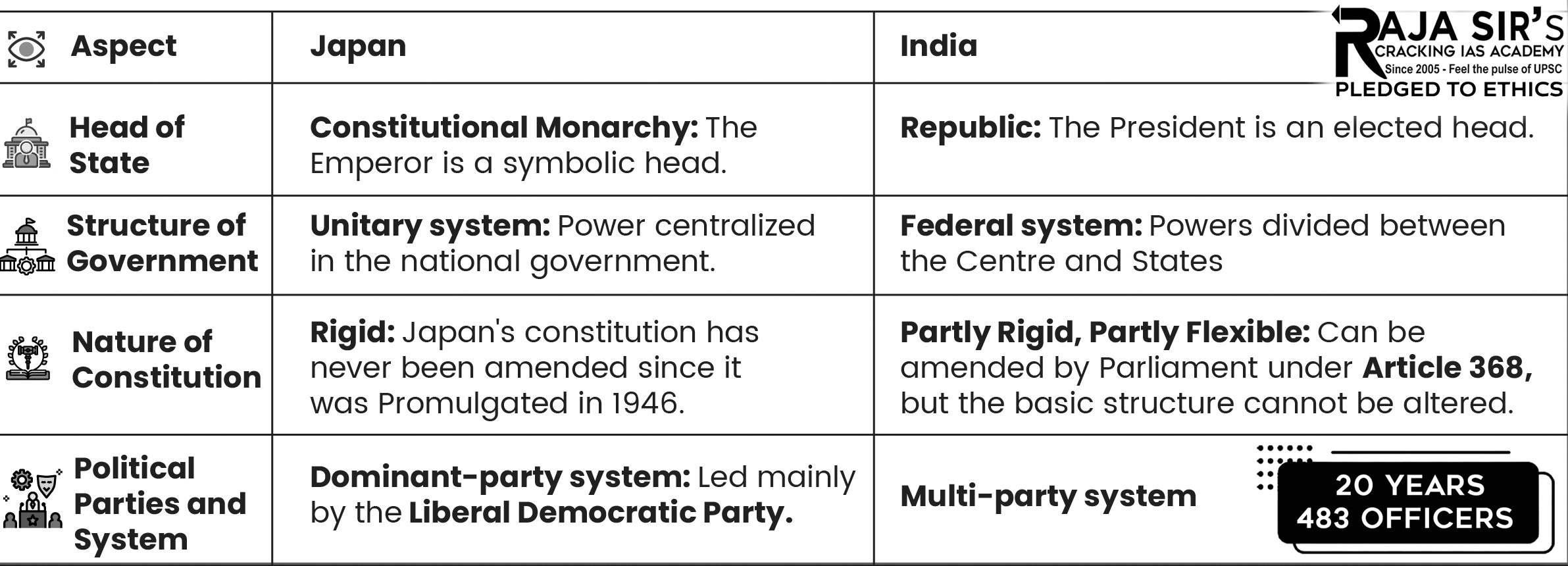
Egypt Declared Malaria-Free
- WHO declared Egypt malaria-free. After Cabo Verde, it was the second country to achieve this status in 2024 and the fifth African nation to achieve this recognition.
- The total number of countries and territories certified malaria-free by WHO now stands at 44.
- Malaria has plagued Egypt since 4000 BCE, particularly in Nile river communities. Efforts to combat malaria began in the 1920s, including banning rice cultivation near homes to reduce mosquito breeding.
- Malaria cases surged during World War II due to population displacement and supply disruptions.
- The construction of the Aswan Dam in 1969 created new malaria risks due to stagnant water. Egypt and Sudan launched a joint project in 1970 to mitigate these risks through strict vector control and public health monitoring.
- WHO Certification Process
- WHO declares a nation malaria-free upon proof that native malaria transmission has been broken for at least three years. In June 2024, WHO confirmed no local transmission of malaria in Egypt, with all cases being imported from endemic countries.
|
Egypt’s Geography
Aswan Dam
|
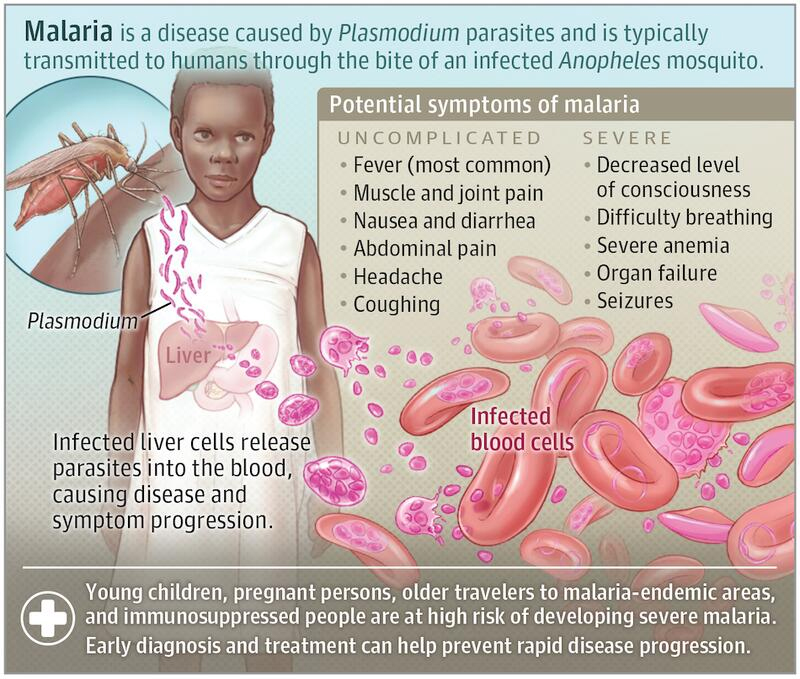
Saranda Forest
The Supreme Court Bench ordered the Jharkhand government to give an undertaking to notify a new wildlife sanctuary in Saranda.
- It is the largest Sal forest in Asia located in Jharkhand.
- Sal Tree is a moist deciduous tree.
- Saranda means ‘the land of seven hundred hills’.
- Fauna: It is home to endangered species of flying lizards and elephants.
- Flora: Sal, Kusum, mushroom, Mahua etc.
- Nearly 80% of the human population belongs to Ho, Munda, Oraon and some primitive tribes.
Demographic shift and India
- India’s elderly population (60+) is rapidly increasing, from 149 million in 2023 (10.5% of the population) to an estimated 347 million by 2050 (20.8%).
Challenges of an Ageing Population
- Rising Dependency Ratio: India’s old-age dependency ratio is 15.7 per 100 (2023), increasing economic pressure on public resources.
- Healthcare Burden: 30% of elderly women and 28% of elderly men suffer from chronic conditions like diabetes and hypertension, especially in rural areas (Longitudinal Ageing Study of India, LASI 2017-18).
- Financial Insecurity: According to India Ageing Report 2023, 40% of India’s elderly are in the poorest quintile, with 18.7% lacking income.
- Inadequate Pension & Insurance Coverage: Less than 20% of elderly Indians have health insurance, leading to significant out-of-pocket health expenses.
- Social Isolation: Migration of younger family members leaves many elderly, especially in Kerala (16.5% elderly), facing loneliness and depression.
- Labour Force Shrinkage: The growing elderly population in states like Kerala and Tamil Nadu threatens economic productivity due to a shrinking workforce.
- Caregiving Pressures: 58% of elderly men and 68% of elderly women need daily assistance, burdening family caregivers (LASI, 2017-18).
- North-South Demographic Divide: Southern states are ageing rapidly due to lower fertility and better healthcare, which leads to uneven pressure on southern states.
Government Initiatives for the Aging Population
- National Policy on Older Persons (NPOP),1999: Promotes senior citizens’ health, safety, and well-being through financial security, healthcare, and shelter. It also focuses on family as a support system.
- Indira Gandhi National Old Age Pension Scheme (IGNOAPS): This scheme provides monthly pensions to BPL elderly (60+) to ensure basic financial security.
- Rashtriya Vayoshri Yojana (RVY): Provides physical aids (vision, hearing, mobility devices) to elderly BPL citizens with age-related disabilities.
- Pradhan Mantri Vaya Vandana Yojana (PMVVY): Pension scheme offering guaranteed returns for senior citizens, ensuring post-retirement financial security.
- Varishtha Pension Bima Yojana (VPBY): Monthly pension scheme for citizens aged 60+, offering regular income as a social security measure.
- Atal Vayo Abhyuday Yojana (AVYAY): Consolidates elderly welfare programs, focusing on helplines, healthcare access, and reducing social isolation.
- National Programme for Health Care of the Elderly (NPHCE), 2010: Provides specialised healthcare for the elderly, focusing on chronic disease management and geriatric healthcare units.
- Integrated Programme for Senior Citizens (IPSrC): Offers financial aid to NGOs for old-age homes, daycare centers, and mobile healthcare for the elderly in underserved areas.
- Ayushman Bharat (PM-JAY) Provides free secondary and tertiary healthcare services for senior citizens.
Way Forward
- Promoting Older Worker Employment: Offer tax incentives for companies hiring older workers.
- Leveraging Experience: Establish mentorship programs for older adults to share expertise. Singapore’s “SkillsFuture” initiative encourages this knowledge transfer.
- Flexible Work Opportunities: Create part-time jobs for older adults without compromising health. Australia’s “Workplace Gender Equality Agency” promotes such flexible arrangements.
- Investing in Age-Friendly Infrastructure: Develop accessible public spaces and transportation.
- Strengthening Healthcare Infrastructure: Invest in geriatric care, especially in rural areas, where 79.9% of Community Health Centers lack specialists.
- Developing Long-term Care Systems: Create care facilities and home-based support for chronic conditions like dementia. Norway’s comprehensive home care model supports seniors with chronic illnesses.
- Promoting Age-Friendly Environments: Implement urban planning policies that enhance mobility and social engagement. New Zealand’s “Age-Friendly Cities” initiative aims for inclusive environments.
- Expanding Social Security Coverage: Strengthen pension schemes like PMVVY and IGNOPS for financial stability, similar to Denmark’s flexible pension system.
- Leveraging Technology for Elderly Care: Expand telemedicine services and promote digital literacy.
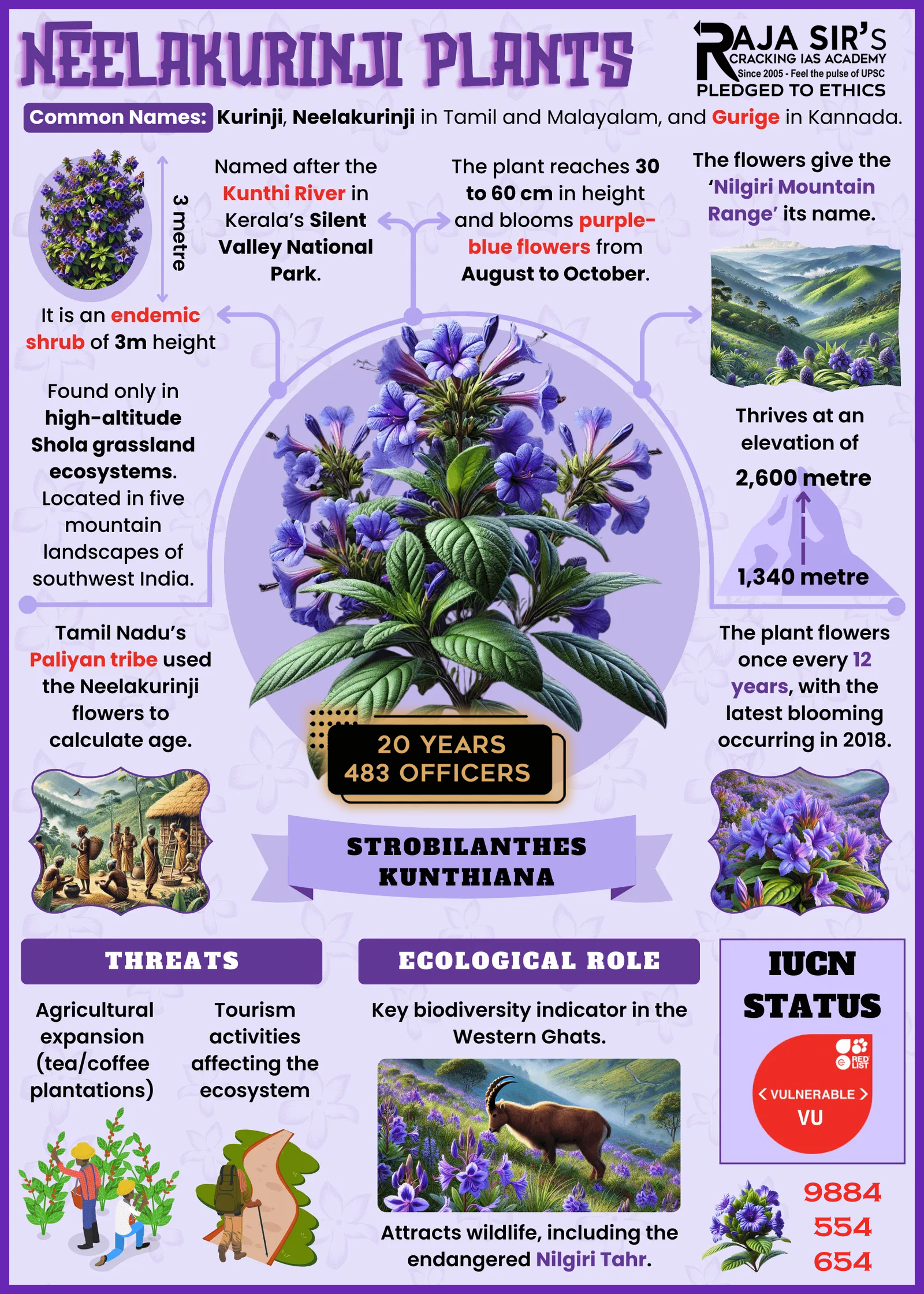 Kurinji Flowers
Kurinji Flowers
Tamil Nadu’s newly notified reserve forest in Gudalur hills is covered in violet kurinji flowers, blooming after 8 years.
- Kurinji plants flowers only once in a lifetime.
- The more famous Neelakurinji (Strobilanthes kunthiana) blooms once every 12 years at relatively higher altitudes (>1,300 m).
- Prominent Location: Shola Forest, Western Ghats.
- Significance:
- Kurinji flowering indicates healthy grasslands; disturbances cause patchy blooms.
- Acts as a barometer of biodiversity and climate change.
Global Family Farming Forum (GFFF)
- The Global Family Farming Forum (GFFF) was launched at the World Food Forum.
- It is a Joint initiative between FAO and the International Fund for Agricultural Development (IFAD).
- It highlights the contribution of family farmers in creating sustainable agrifood systems and addressing the challenges posed by the climate crisis.
- GFFF also commemorated the United Nations Decade of Family Farming 2019-2028 halfway point.
- Family farms comprise over 90% of farms globally, with 550 million farms worldwide. They produce 70-80% of the world’s food in value terms. They are critical in maintaining crop biodiversity and responsibly managing natural resources.
World Food Forum (WFF)
- Launched by the FAO Youth Committee in 2021, it aims to shape agrifood systems for a better future and accelerate the achievement of the Sustainable Development Goals (SDGs).
- It is an annual Flagship Event held at the FAO headquarters in Rome, Italy.
- 2024 Theme: “Good food for all, for today and tomorrow”
- Activities and Initiatives:
- World Food Day: Celebrated annually during the flagship event.
- Rome Water Dialogue: Addressing water scarcity in agriculture.
- Global Family Farming Forum: Highlighting the role of family farmers in food security.
|
Food and Agriculture Organization (FAO) and the Global Framework on Water Scarcity in Agriculture (WASAG) jointly adopted the Rome Declaration to combat water scarcity in agriculture. |
International Fund for Agricultural Development (IFAD)
- It is a specialised United Nations agency dedicated to eliminating rural poverty in developing countries.
- Established: Created in 1977 following the 1974 World Food Conference. HQ: Rome, Italy.
- Primary Functions:
- It is providing low-interest loans and grants to developing nations.
- Supporting agricultural and rural development projects.
- It is empowering rural poor populations, especially smallholder farmers.
Chandrayaan-2 lunar orbiter has made first-ever observation of effects of Sun’s Coronal Mass Ejection (CME) on Moon
The observation was made using the Chandra’s Atmospheric Composition Explorer-2 (CHACE-2) instrument onboard the orbiter.
CHACE-2
- It is a neutral gas mass spectrometer to study the composition of the lunar neutral exosphere in the mass range 1–300 AMU (atomic mass unit).
Coronal mass ejections (CMEs)
- CMEs are large expulsions of plasma and magnetic fields from the Sun’s corona (the outermost part of the Sun’s atmosphere).
- Causes: This is often associated with solar flares and active sunspot regions where magnetic fields are strong and twisted.
- Frequency: CMEs occur more frequently during the solar maximum phase of the 11-year solar cycle. During solar minima, they are relatively rare.
- Possible Impacts of CME on Earth: Damaging satellite electronics and GPS communication, Power grid failure, Communication Disruptions e.g. radio signal disruption, aurora formation, radiation hazard to astronauts etc.
 Key findings of CHACE-2
Key findings of CHACE-2
- When the Coronal Mass Ejection (CME) struck the Moon, it intensified the ejection of atoms from the lunar surface.
- Lunar exosphere is extremely thin atmosphere around the Moon, so tenuous that its gas particles rarely collide.
- This led to a noticeable rise in number of neutral atoms per unit volume in the dayside lunar exosphere.
|
Chandrayaan 2
|
Specialty Fertilizers
India facing specialty fertilizer price surge as China suspends exports
- These are tailored to the specific needs of different crops and soil types.
- Definition: Fertilizer formulations designed to supply nutrients efficiently, often in a controlled, targeted, or slow-release manner.
- They improve nutrient use efficiency (NUE), reduce losses, and minimize environmental impact..
- Types: Slow released fertilizers, Controlled-release fertilizer, stabilized fertilizer, customized fertilizer and fortified fertilizers.
- Status of India
- India consumes approximately 1.2 to 1.5 MT per year of specialty fertilizers.
- Majority of specialty fertilizer demand is met through imports with china accounting for more.
Climate Financing to Developing Nations
- The 29th COP under UNFCCC in Azerbaijan will focus on establishing a New Climate Finance Goal (NCQG) for the post-2025 period.
- As per the UNFCCC, climate finance involves public or private funds, national or transnational, aimed at climate mitigation and adaptation.
Need for Climate Finance for Developing Nations
- Vulnerability to Climate Change due to their geographical location and reliance on agriculture despite contributing minimally to global emissions (IPCC 6th Assessment Report).
- Limited Financial and Technical Resources: India requires ₹850 lakh crore to achieve net-zero emissions by 2070, which is unmanageable without external funding.
- Higher Cost of Capital for Clean Energy: According to the International Energy Agency (IEA), the cost of capital for solar energy projects in developing nations is nearly twice as high.
- Energy Access Deficit for 675 million people in developing countries in 2021 (IEA).
- Historical Injustice in Emissions: The IPCC report says developed countries, despite their smaller populations, are responsible for 57% of emissions since 1850.
- Competing Developmental Priorities like poverty and infrastructure deficits, diverting resources from climate action. India needs ₹16 lakh crore for EVs and ₹8 lakh crore for green hydrogen.
India’s Climate Finance Requirement
- Renewable Energy Targets of 450 GW By 2030, India needs ₹16.8 lakh crore, essential for reducing fossil fuel reliance and fulfilling international climate commitments.
- Green Hydrogen Production: To produce 5 million metric tonnes of green hydrogen annually, India requires approximately ₹8 lakh crore for infrastructure development, critical for decarbonising.
- Electric Vehicle (EV) Purchases: India needs an estimated ₹16 lakh crore to support the widespread adoption of electric vehicles, with an aim of 30% of all vehicles being electric by 2030.
- Long-Term Net-Zero Commitment: Achieving net-zero emissions by 2070 will require about ₹850 lakh crore, underscoring the need for sustained climate financing across various sectors.
- Climate Resilience and Adaptation: With climate-related disaster costs projected at ₹3.2 lakh crore annually by 2030, climate finance will support vital adaptation strategies, including flood management.
- Access to Clean Energy: Approximately 675 million people in developing countries lacked electricity in 2021 (IEA), highlighting the need for significant funding to improve energy access.
- Sustainable Agriculture Practices: Investment in climate-resilient agricultural practices is essential for food security, as agriculture contributes 17-18% to India’s GDP.
- Urban Infrastructure Development: Rapid urbanisation, projected to exceed 600 million people in cities by 2031, necessitates substantial investment in sustainable urban infrastructure.
- International Climate Commitments: To meet its Nationally Determined Contributions (NDCs) under the Paris Agreement, including a 33-35% reduction in emissions intensity from 2005 levels by 2030.
- Technology Transfer and Capacity Building: Climate finance is crucial for facilitating technology transfer from developed nations, aiding India’s target of reaching 300 GW solar capacity.
Challenges Regarding Climate Finance
- Insufficient Funds: Developing countries require $140–300 billion annually for climate adaptation by 2030 (UNEP), but many struggle to access necessary finance.
- Lack of Ambition: Developed nations failed to meet the $100 billion annual climate finance target in 2021 (OECD), raising concerns about their commitment to supporting developing countries.
- Transparency and Accountability: Many countries lack effective monitoring of climate finance commitments, with the 2022 Climate Finance Transparency Index highlighting insufficient reporting.
- Ensuring Equity and Justice: Climate finance must prioritise vulnerable communities, as emphasised by the Climate Justice Alliance, to ensure their needs are addressed in decision-making.
- Mobilizing Private Finance: An estimated $1 trillion annually in private investment is needed to meet global climate goals (World Economic Forum), yet investor hesitation persists due to risks.
- Capacity Building and Technology Transfer: Climate finance should include support for capacity building and technology transfer, as highlighted by the Green Climate Fund.
- Debt Burdens: Climate action increases existing debt burdens in developing nations, with many struggling to repay loans for climate projects (UNCTAD).
- Economic Impacts: Global economic slowdowns, like those caused by COVID-19, divert resources away from climate initiatives, complicating funding efforts.
India’s Initiatives Regarding Climate Finance
- National Adaptation Fund for Climate Change (NAFCC) 2015 supports adaptation activities in vulnerable regions across States and Union Territories through a project-based approach.
- National Clean Energy Fund 2010 finances clean energy projects and innovative technologies, supporting initiatives like the Green Energy Corridor and the Jawaharlal Nehru National Solar Mission.
- Perform, Achieve and Trade (PAT) Scheme 2012 is a market-based mechanism enhances energy efficiency in large industries by allowing companies to earn tradable certificates for energy savings.
Way Forward
- Reinforce Developed Nations’ Commitments of $100 billion target annually set in Paris agreement and Leverage the Copenhagen Accord Framework to ensure sustained support for climate initiatives.
- Enhance Access to Climate Funds: Streamlining access to climate finance mechanisms like the Green Climate Fund (GCF) is vital. The GCF approved only 22 projects in its first four years.
- Innovative financial instruments, such as green bonds and blended finance, can attract crucial private investments. The World Economic Forum estimates a need of $1 trillion annually in private investment.
- Strengthen Capacity Building: Developing nations require targeted training and technical assistance to effectively implement climate projects. E.g. UNDP’s Climate Change Adaptation.
- Climate resilience projects, particularly in agriculture and water management. Research indicates that investing $1.8 trillion in climate adaptation could yield $7.1 trillion in economic benefits by 2030.
- Encourage Technology Transfer from developed to developing nations. For example, India’s aim to increase solar capacity to 300 GW requires access to advanced solar technologies.
- International Collaboration: The Climate Investment Funds have committed over $8 billion for projects across various sectors, showcasing the effectiveness of pooling resources from multiple countries.
Real Effective Exchange Rate (REER)
Rupee weakens to a record low, with the Real Effective Exchange Rate (REER) indicating continued undervaluation.
- REER measures a country’s currency value against a basket of major trading partners’ currencies, adjusted for relative inflation.
- It is derived by adjusting the Nominal Effective Exchange Rate (NEER) for relative consumer prices.
- Trade Competitiveness:
- A higher REER makes exports more expensive and imports cheaper, reducing trade competitiveness.
- A lower REER indicates the currency is undervalued, potentially boosting exports.
Global Commission On The Economics Of Water
- The Economics of Water report was released by the Global Commission on the Economics of Water.
Key Findings
- GDP losses from water scarcity could reach 8% by 2050, with lower-income nations losing up to 15%.
- “Atmospheric rivers” transport moisture from one region to another. China and Russia are the main beneficiaries of “atmospheric river” systems. At the same time, India and Brazil are the major exporters, as their landmass supports the flow of green water to other regions.
- About 2 Bn people lack safe drinking water, and 3.6 Bn – 44% of the population – lack safe sanitation.
- More than 1,000 children under five die daily from illnesses related to unsafe water and poor sanitation, while women and girls spend 200 million hours each day collecting water.
- About 80 per cent of the wastewater generated by industries worldwide is not recycled.
CAQM invokes Stage-II of Graded Response Action Plan (GRAP) in entire NCR
CAQM Sub-Committee on GRAP has directed to enforce measures outlined under Stage II due to deterioration in NCR’s air quality index (AQI).
- Under GRAP-2, use of coal and firewood is restricted, and diesel generator sets will face limitations in operation.
GRAP
- It is an emergency response mechanism based on AQI level of Delhi. It is divided into four stages, based on AQI levels.
- Stage 1: Poor category (AQI 201 to 300).
- Stage 2: Very poor category (AQI 301-400).
- Stage 3: Severe category (AQI 401-450).
- Stage 4: Severe + category (AQI 451+).
- Commission for Air Quality Management (CAQM) in NCR and adjoining areas oversees implementation of GRAP.
- CAQM was established under Commission for Air Quality Management in NCR and Adjoining Areas Act, 2021.
- It replaced Environment Pollution (Prevention and Control Authority).
Reason behind rising air pollution in Delhi during winters:
- Wind Direction: As monsoon withdraws, predominant direction of winds changes to north westerly which brings dust from Rajasthan and sometimes from Pakistan & Afghanistan.
- Temperature inversion: Layer of cool air forms near the ground, trapping pollutants and preventing them from dispersing.
- Low wind speeds: Reduce the dispersion of pollutants.
- Stubble Burning: Farmers in neighbouring states burn crop stubble.
- Other Factors: Vehicular Emission, Industrial Emission, Construction dust, Garbage burning etc.
|
National Air Quality Index (AQI):
|
Central Asian Mammals Initiative (CAMI)
Central Asian countries have come together under CAMI to protect 17 shared species like Saiga, Bukhara Deer etc.
- It was launched in 2014 at the 11th Meeting of the Conference of the Parties (COP11) to the Convention on the Conservation of Migratory Species of Wild Animals (CMS).
- Objective: to coordinate conservation efforts for 17 key migratory mammal species in Central Asia.
Emissions from Forest Fires
- Carbon dioxide emissions from forest fires increased by 60% between 2001-23: Study.
- The study divides the world into distinct fire regions, called ‘pyromes,’ based on environmental, human, and climatic factors that influence fire patterns. Grouping forests into pyromes enabled isolating climate change’s impacts from other influencing drivers, such as land use and vegetation.
Key Findings
- Fire emissions spanning boreal forests in Eurasia and North America almost tripled between 2001-23.
- Extratropical forest fire carbon emissions have increased significantly due to climate change.
- Carbon combustion rate, a measure of fire severity based on how much carbon is emitted per unit of area burned, increased by almost 50% across forests globally between 2001 and 2023.
Major causes of increased forest fires in these areas
- Anthropogenic climate change causes favourable weather, known as ‘fire weather’.
- Increased lightning frequency.
- Increased hot and dry conditions caused by heatwaves and droughts
- Rapid warming in high northern latitudes
All India Rural Financial Inclusion Survey
- The All India Rural Financial Inclusion Survey for 2021-22 was released by NABARD.
Key Findings
- Average monthly income of households saw a substantial rise of 57.6% over five years, increasing from Rs. 8,059 in 2016-17 to Rs. 12,698 in 2021-22.
- Sources of Livelihood: Self-employment, including farming, government/ private service, and casual wage labour, were three prominent income-generating activities.
- Increase in Savings: 66% of households reported saving in 2021-22, compared to 50.6% in 2016-17.
- Insurance Coverage: About 86% of agricultural households and 73% of non-agricultural households reported being covered under any routine type of insurance.
- Financial literacy: Overall, only 10% of individuals from rural areas and close to 13% from semi-urban areas reported having been exposed to any session on financial education or training
Agriculture related findings
- 57% of rural households in the country were “agricultural”.
- Average size of land possessed by agricultural households works out to 0.7 ha.
- All-India average monthly income of agricultural households, at Rs 13,661 in 2021-22, was more than the Rs 11,438 for non-agricultural rural households. The contribution of cultivation and animal husbandry to total income was over 45% in 2021-22, up from 43.1% in 2016-17.
- Kisan Credit Card (KCC): 44% of agricultural households possessed a valid KCC.
|
“Agricultural household” is defined as one that:
|
Trachoma
Fiji has officially become the 26th country worldwide to eliminate trachoma as a public health concern.
- Trachoma is a neglected tropical disease (NTD) and the world’s leading infectious cause of blindness.
- Cause: By Chlamydia trachomatis Bacteria,
- Spread: Via personal contact, contaminated surfaces, and flies exposed to eye or nasal discharge.
- Repeated infections cause eyelid scarring, inward-turning eyelids, and eventual blindness.
- Endemic in vulnerable communities with limited clean water and sanitation access.
- India has successfully eliminated trachoma as a public health problem.
NAFED
Appointments Committee of the Cabinet (ACC) changed the MD of National Agricultural Cooperative Marketing Federation of India (NAFED).
- Established: October 2, 1958, on the birthday of Mahatma Gandhi.
- Registration: Registered under the Multi-State Co-operative Societies Act.
- Headquarters: New Delhi.
- Key Functions:
- Facilitate the marketing and trade of agricultural produce and forest resources.
- Implement price stabilisation measures under schemes like Operation Greens.
- Procure oilseeds, pulses, and copra under the Price Support Scheme (PSS) in collaboration with the Food Corporation of India (FCI) and state governments like PM-AASHA.
Strategic EU-India Agenda
The European Council has approved the EU-India Strategic Agenda, identifying five priority pillars to address emerging opportunities, challenges, and threats in a geopolitical context.
Five Priority Pillars
- Prosperity and Sustainability: Focuses on economic growth, job creation, decarbonization, and strengthening supply chains.
- The goals of finalizing a Free Trade Agreement (FTA) and concluding an Investment Protection Agreement (IPA) are central to this.
- Technology and Innovation: Deepens cooperation on critical emerging technologies, digital infrastructure, and promoting research collaboration through the Trade and Technology Council and Horizon Europe.
- Security and Defence: Addresses global security threats, geopolitical tensions, and technological change. E.g. Coordinate on Indo-Pacific and promote rule based maritime order.
- Connectivity and Global Issues: Strengthens regional connectivity, global governance, and cooperation in third countries.
- Example: Strengthening initiatives like India-Middle East-Europe Economic Corridor (IMEC) and Global Gateway.
- Enablers across Pillars: Facilitates skills mobility, knowledge exchange, business engagement, and institutional cooperation to support all four main pillars.
|
India-EU Relations
|
Z-Morh Tunnel
- Militants targeted the workers involved in constructing the Z-Morh tunnel.
- The Z-Morh tunnel connects the Sonmarg health resort with Kangan town in Ganderbal, Kashmir.
- It is part of the Zojila tunnel project, which aims to provide all-weather connectivity from Srinagar to Ladakh throughout the year. Originally conceived by the Border Roads Organisation in 2012.
- It acquired its name from the Z-shaped road stretch where the tunnel is being constructed. The stretch is situated at an altitude of over 8,500 feet and is prone to snow avalanches in the winter, leading to its closure for most of the winter.
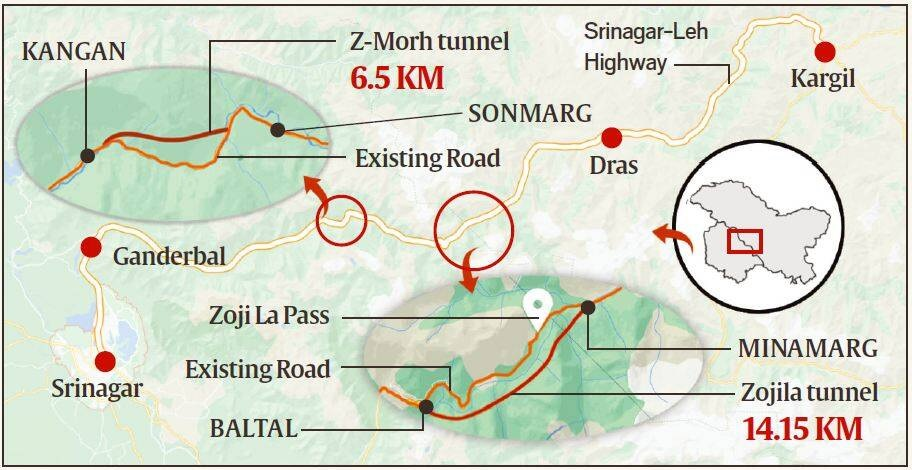
Strategic importance of the Z-Morh tunnel
- Provide quick access for military personnel to the border areas of Ladakh.
- Provide safe connectivity between Srinagar, Dras, Kargil and Leh regions.
- This all-weather road will lessen the dependence on air maintenance of the forward locations of the Army through the transport of aircraft of the Indian Air Force, thus reducing expenditure on aircraft use.
Nilgiri Tit Butterfly
- Nilgiri tit butterfly was noted to lay its eggs on the inflorescence (complete flower head) of the larval host plant, Eulophia epidendrum, a terrestrial orchid species.
- It is an endemic species, first described in 1884 from Coonoor in the Nilgiris. It has also been recorded in Sri Lanka. It is classified under Schedule II of the Wildlife Protection Act.
- This butterfly is predominantly found in forested areas, providing the humid and rocky slopes it prefers.
- It has also been recorded in various locations across the Western Ghats, including the Geddai slopes of the Nilgiris district, Kalakkad Mundanthurai Tiger Reserve, TamilNadu, Chinnar Wildlife Sanctuary, Kerala and Silent Valley National Park, Kerala.
Star Formation
A study by the Indian Institute of Astrophysics shows that supermassive black holes and their relativistic jets suppress star formation in nearby galaxies.
- Radiation and high-speed jets eject gas from molecular clouds, preventing new stars from forming and regulating galactic growth.
- Stars form in cold, dense molecular clouds as gravity condenses gas and dust into protostars, igniting nuclear fusion.
- Lifespan depends on mass: low-mass stars become white dwarfs, while high-mass stars explode as supernovae, leaving neutron stars or black holes.
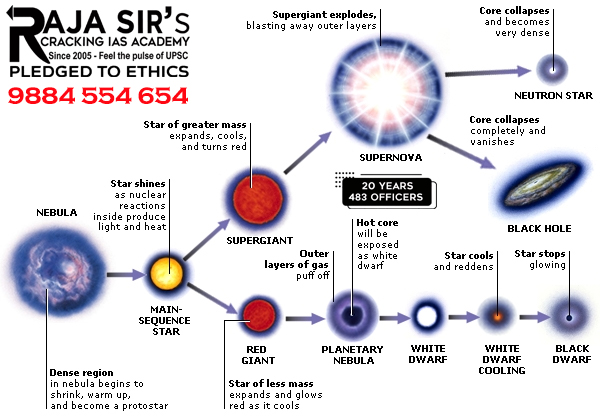









 Latest News
Latest News
 General Studies
General Studies